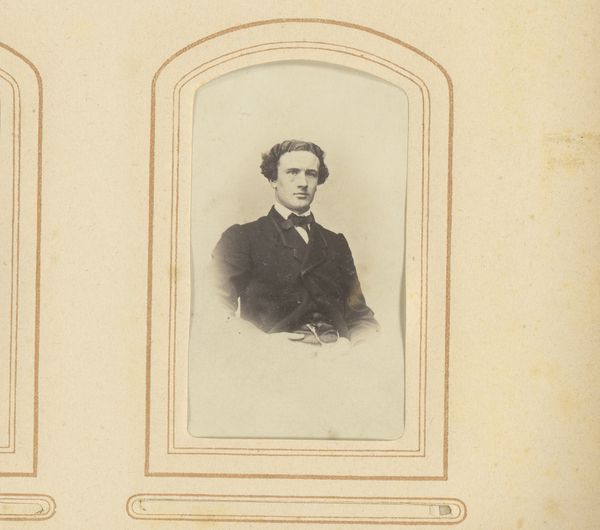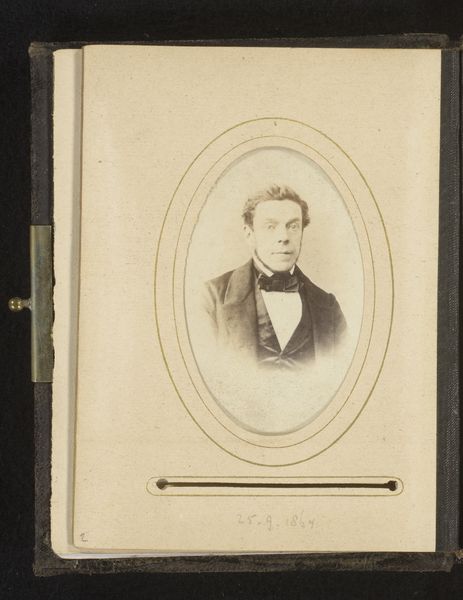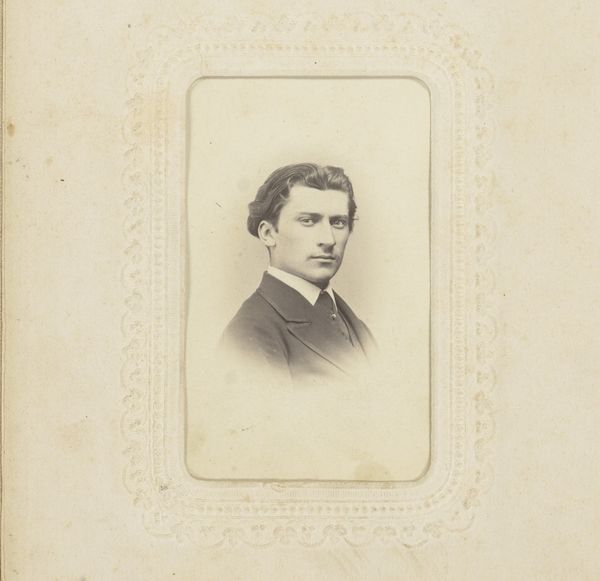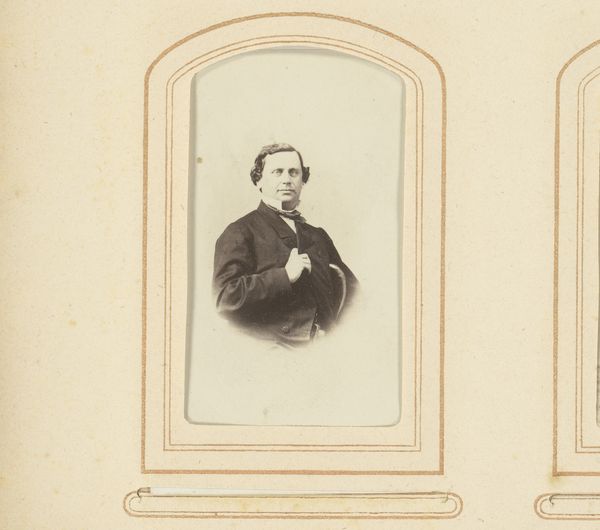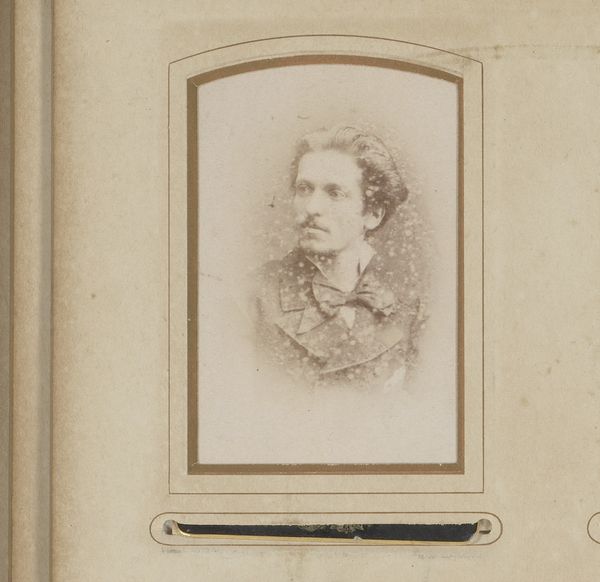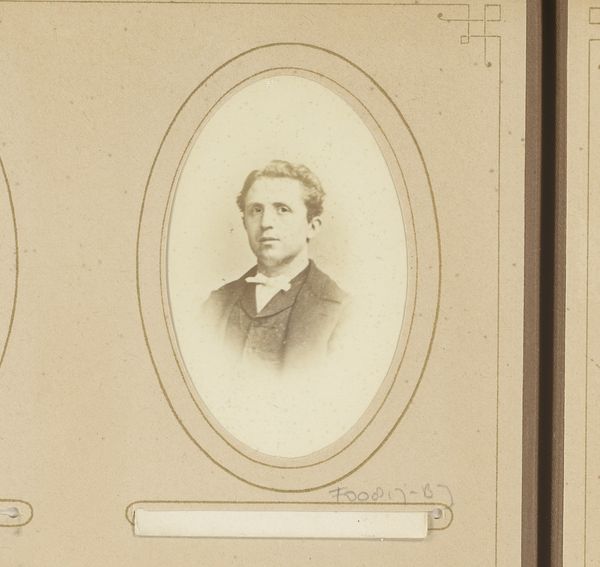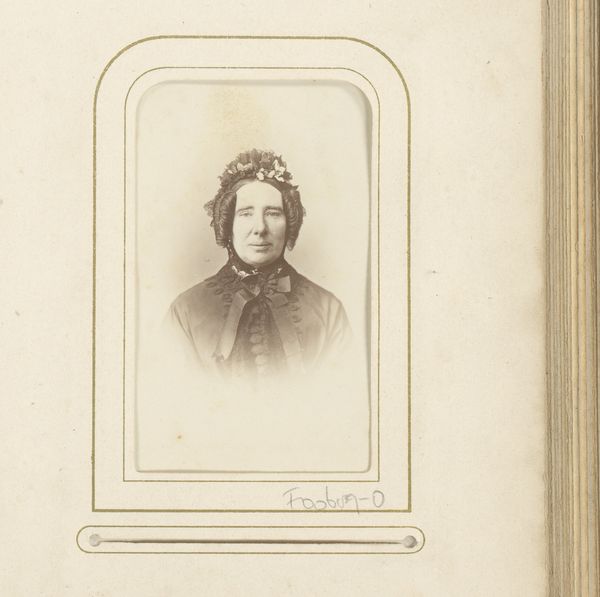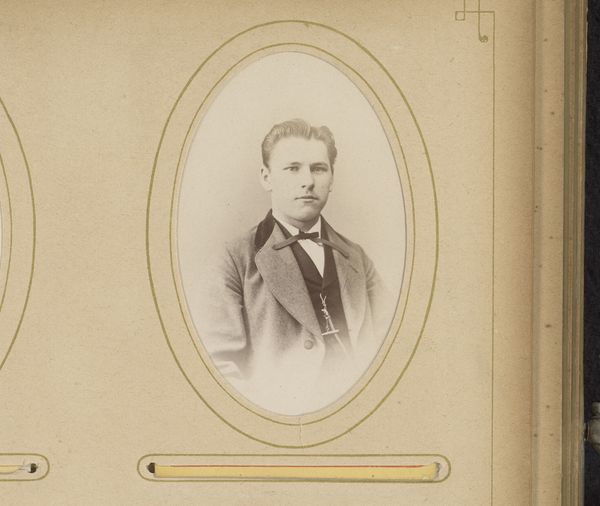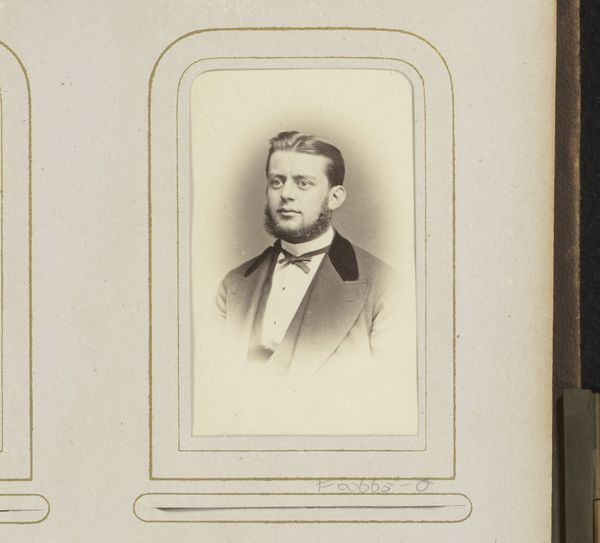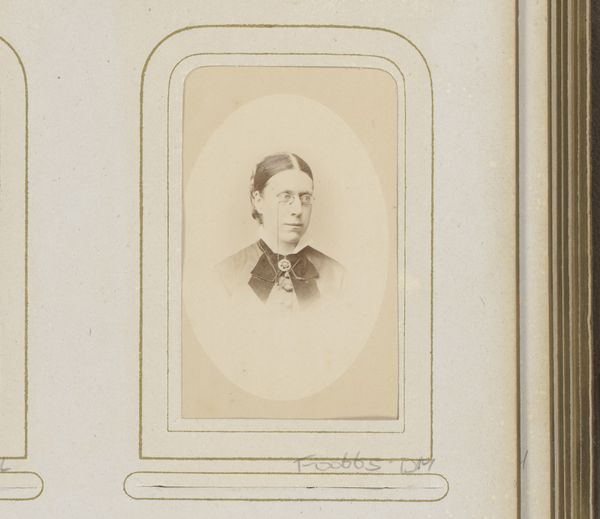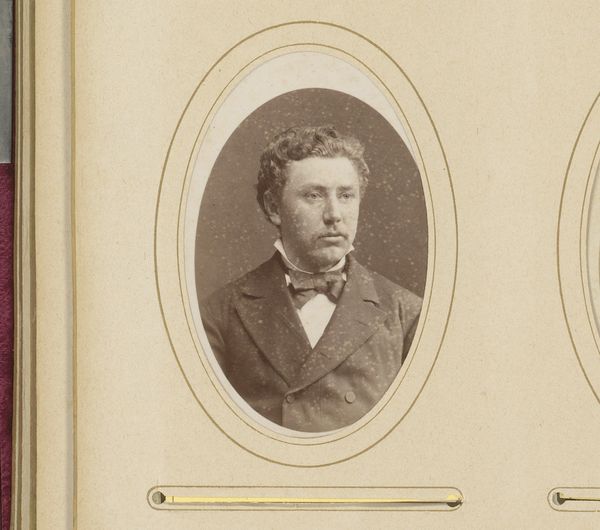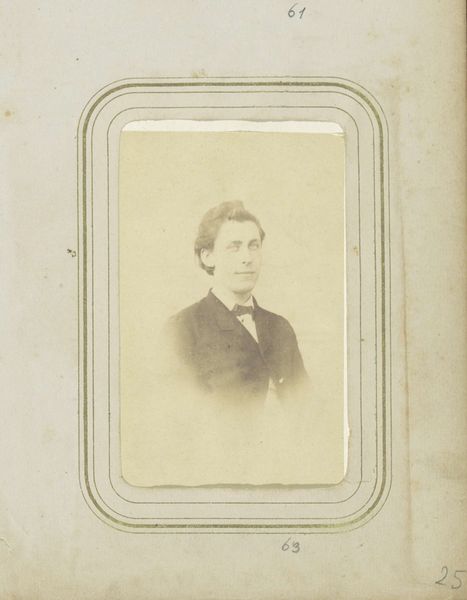
Dimensions: height 82 mm, width 50 mm
Copyright: Rijks Museum: Open Domain
Editor: This is "Portret van een man," or "Portrait of a Man," taken sometime between 1861 and 1887, artist unknown. It’s a gelatin-silver print mounted in a formal album page, so there's a sense of intimacy and distance all at once. What historical and social stories do you see in this image, given its very particular medium? Curator: The gelatin-silver print, as a photographic process, became more widely accessible during this period, democratizing portraiture. How might this availability have affected existing power dynamics within representation? Consider who typically had their portraits painted versus who now could afford a photographic portrait. Editor: That’s interesting. Before photography, portraits were often symbols of wealth or status. Did the rise of photography shift ideas about class and representation? Curator: Precisely. This shift challenged traditional notions of portraiture as a preserve of the elite. Photography offered a means of self-representation to a broader spectrum of society, though still within specific social and cultural constraints. We should question who was included in these shifts, and whose image was intentionally, or unintentionally, omitted. Does the anonymous nature of the artist influence how we should perceive this piece, considering ideas about the power of authorship? Editor: I hadn’t thought about the act of omission as part of representation. Curator: The visual language of the time is rooted in power dynamics that are deeply embedded in our culture. By thinking about access and how it changed, we are in turn confronted by what, ultimately, stayed the same. Editor: That gives me a lot to think about. Thanks!
Comments
No comments
Be the first to comment and join the conversation on the ultimate creative platform.
